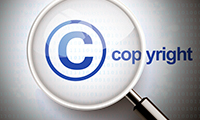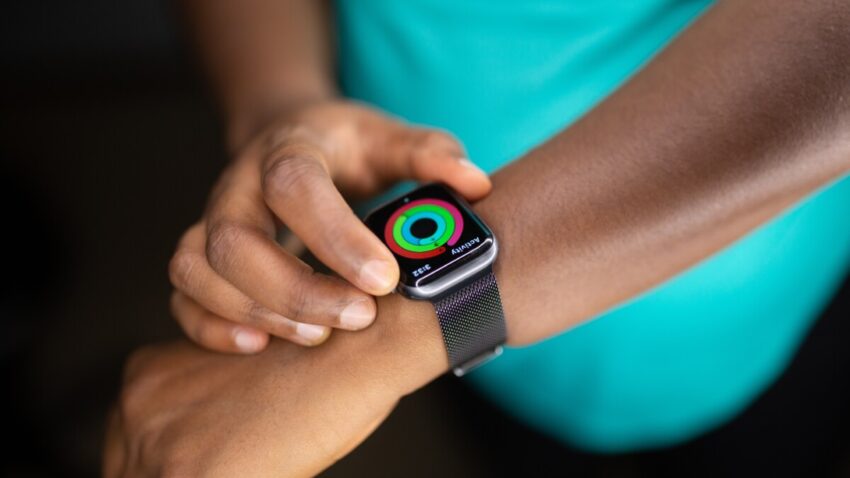Intellectual property, or IP, is an ancient idea that dictates how we consume today’s pop culture. Without IP, we wouldn’t be able to enjoy our favorite shows from the comfort of our couch, quote iconic movie lines, or even immerse ourselves in the latest bestselling novel.
IP is crucial to pop culture, but what is it, exactly? Intellectual property is “a work or investigation that is the result of creativity to which one has rights and for which one may apply for a patent, copyright, trademark, etc.” Sound vague? It’s supposed to.
Part of the reason is because of IP’s intangibility. How do you determine who owns the property and owns the rights to it? How can you restrict the usage of such property so that the author’s rights are not violated? These are all questions inventors, artists, licensing professionals, IP experts, and many others grapple with every day to bring media to the masses.
There are four common types of intellectual property: copyrights, moral rights, trademarks, and patents – and each plays a hand in popular culture.
Copyrights
A copyright protects the expression of an original idea. Some examples of things that can be copyrighted are paintings, illustrations, musical compositions, blog posts, poems, movies, computer programs, etc. All the examples stated previously have two components: original and fixed.

For something to be original, the Supreme Court stated that it must have a “spark” and “modicum” of creativity. For example, slogans, phrases, lettering, and coloring can’t be copyrighted. For something to be fixed, the item must be reproducible and communicable in some format.
The length of a copyright can vary. For all items produced after 1978, the copyright protection lasts for the author’s lifetime and 70 years after their death. If it’s an anonymous piece of work, the protection lasts for either 120 years from the creation date or 95 years after publication, depending on which option is shorter.
Even though an item is copyrighted, it still can be used. Whenever we watch movies, listen to music, or play video games, we use copyrighted items. You can even use copyrighted items in your work as long as you purchase the licensing works, use the Copyright Act’s exceptions, or utilize the public domain.
With the expiration date of copyrights, 2024 has brought in a multitude of creative works. Some of these creative works include Steamboat Willie, the first sound film with Mickey and Minnie Mouse; Millions of Cats, the oldest children’s picture book in the U.S.; and The Mystery of the Blue Train, a novel about Hercule Poirot, a central character in Agatha Christie’s work.
Famous artists, including Taylor Swift, Ed Sheeran, Led Zeppelin, Katy Perry, and Olivia Rodrigo, also had copyright infringement cases against them. You may have noticed how in some of Taylor Swift’s songs, there’s an addition of “(Taylor’s Version).” Under the original music’s copyright, Swift did not own the sound rights to her songs, meaning that she would be unable to sing them without the permission of Big Machine Records. However, with the addition of the parenthetical words, she was able to re-record her old music and sing them. In addition, with the rise in popularity of artificial intelligence, there have been more AI-related copyright infringement cases. As of 2023, OpenAI and Microsoft had a class action lawsuit filed against them because writers believed they trained ChatGPT to steal work from authors.
Moral Rights
Moral rights are an extension of copyright law that grants rights to authors and allows them to prevent the manipulation of their work. There are two main components to moral rights in the United States: attribution and integrity. The former provides authors the right to be credited with their work, and the latter gives them the right to prevent usage of their work if it’s incorrectly presented.
The United States Copyright Office considers three principles when identifying whether an issue classifies as a moral rights issue. They defined the principles as, “respecting foundational principles of U.S. law (including the First Amendment, fair use, and limited terms), appreciating the importance creators place on their attribution and integrity interests, and recognizing and respecting the diversity among industry sectors and different types of works.”
The first copyright legislation to mention moral rights was the Visual Artists Rights Act (VARA) of 1990. The legislation protects paintings, drawings, sculptures, and photographic images for artists. Some disputes of moral rights include graffiti. In Long Island City, NY, graffiti artists would paint at the 5Pointz industrial site. However, a New York City developer destroyed the artistic corner to develop a luxury apartment high-rise. In court, they ruled that a damage award must be paid towards the artists because their work is protected by VARA.
Trademarks
A trademark is a word, phrase, symbol, or design that is a clear identifier of specific goods or services. Others are unable to use their design without their explicit permission and are also unable to use a similar design.
Unlike copyrights, trademarks do not expire. However, the recognizable insignia must be regularly used to utilize intellectual property rights.
For a trademark to be registered, it must go through the process from the United States Patent and Trademark Office (USPTO) and become registered with the classic ® symbol.

However, if a trademark is not registered, it still can receive protection rights. The trademark will just be unregistered with the symbol ™ adjacent to it. The difference between the two symbols is that those with the ® will have more legal protections.
Commonly recognized brands are all examples of trademarks, including Ford, Domino’s, Target, McDonalds, NIKE, and designer brand logos. Even scents can be trademarked! In Verizon stores, they share a common scent, described as “flowery musk.” That scent, Reg. No. 4,618,936, is trademarked and is a unique part of their brand.
Patents
Patents are new, innovative technical solutions to a problem. In the United States, a patent gives the inventor the right to “exclude others from making, using, offering for sale, or selling an invention or importing it into the U.S.” When issuing a patent, the USPTO looks for four qualifications. The invention must work, there must be a clear description of its creation and instructions, it must be new, and it cannot be “obvious.”
Depending on its type, a patent typically lasts anywhere from 15-20 years after the filing date. To continue enforcing the patent, maintenance fees are paid to the USPTO.
One example of a patent is the iconic design of the Coca-Cola bottle. There were many issues with the original bottle. The curved design functioned poorly on the production line, repeatedly topping over and making the production less efficient.

However, the company soon developed a bottle – the iconic shape that we’re all used to seeing – that solved those issues. It functioned well on the production line, had a grip to ensure that the bottle wouldn’t slip out of hands, and was pleasant to look at.
With all the nuances of intellectual property, it’s easy to see how disputes may easily come about. Just recently, Apple had to pause sales of their latest Apple Watches because of an patent dispute in which Masimo alleged that Apple unrightfully used their blood oxygen sensor technology. On October 26, 2023, the US International Trade Commission deemed that Apple copied Masimo’s Blood Oxygen feature and ordered them to stop selling products that utilize the feature.
– Angela Chan